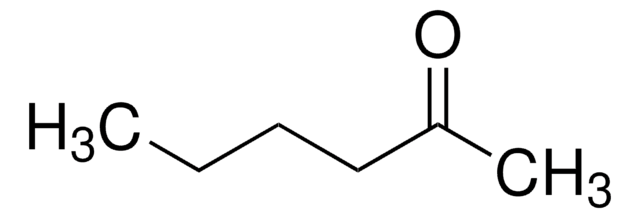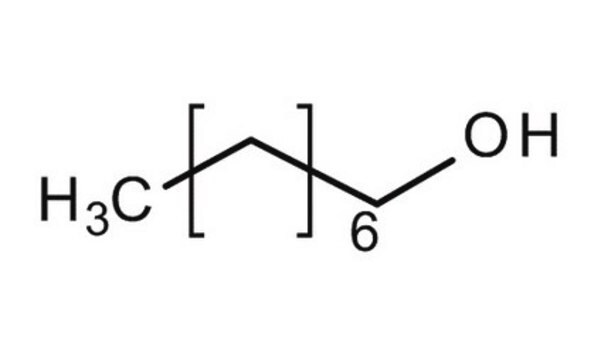02479
2-Octanone
analytical standard
Synonym(s):
Hexyl methyl ketone
About This Item
Recommended Products
grade
analytical standard
Quality Level
assay
≥99.5% (GC)
shelf life
limited shelf life, expiry date on the label
technique(s)
HPLC: suitable
gas chromatography (GC): suitable
refractive index
n20/D 1.416 (lit.)
n20/D 1.416
bp
173 °C (lit.)
mp
−16 °C (lit.)
density
0.819 g/mL at 25 °C (lit.)
application(s)
cleaning products
cosmetics
environmental
flavors and fragrances
food and beverages
personal care
format
neat
SMILES string
CCCCCCC(C)=O
InChI
1S/C8H16O/c1-3-4-5-6-7-8(2)9/h3-7H2,1-2H3
InChI key
ZPVFWPFBNIEHGJ-UHFFFAOYSA-N
Looking for similar products? Visit Product Comparison Guide
General description
Application
Recommended products
signalword
Warning
hcodes
Hazard Classifications
Acute Tox. 4 Dermal - Flam. Liq. 3
Storage Class
3 - Flammable liquids
wgk_germany
WGK 1
flash_point_f
132.8 °F - closed cup
flash_point_c
56 °C - closed cup
ppe
Eyeshields, Faceshields, Gloves, type ABEK (EN14387) respirator filter
Choose from one of the most recent versions:
Already Own This Product?
Find documentation for the products that you have recently purchased in the Document Library.
Customers Also Viewed
Our team of scientists has experience in all areas of research including Life Science, Material Science, Chemical Synthesis, Chromatography, Analytical and many others.
Contact Technical Service














